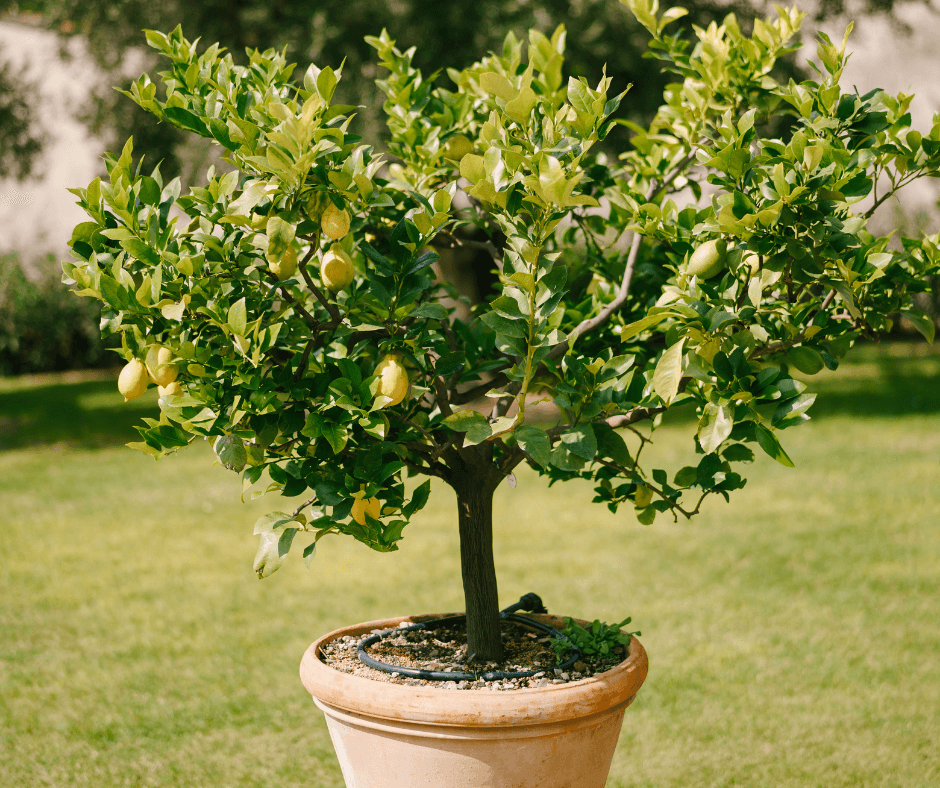
“Ever since I started my lemon tree from seed, its leaves appear cut around the edges. I’m not overwatering. Today I gave it Jobe’s Organics Fruit & Citrus fertilizer and treated with Bonide Systemic Insect Control, both of these being used for the first time, as I haven’t done anything but water and mist it since its birth. When its first leaf appeared, it was small and oddly shaped. I thought it was a “lucky” leaf, like Nemo’s “lucky” fin in Finding Nemo (lol). I have kept a fan on it on medium to make it strong that continues to run (for months and months now). I don’t think that’d be causing this. If it’s a pest, I have no idea which one. Thank you so much for your time.” Question from Bradley of Cleves, Ohio
Answer: There are a number of reasons that may explain why your citrus leaves look malformed and discolored. Both physical and nutritional problems are among the possibilities. Let’s start by covering the essentials for growing indoor citrus.
Indoor Citrus Growing Needs
Indoor citrus trees require a minimum of 8 hours of sunlight a day to perform well in addition to warm growing conditions (60 – 75 degrees F) and moderate humidity (45 – 50%). Bringing plants outdoors in summer, on a sunny porch or patio, helps them grow better year-round. Plant them pots that drain well, and provide a potting soil with good porosity and water-holding ability, such as Black Gold Natural & Organic Potting Mix, which is OMRI Listed for organic growing. Regular fertilization is essential, but pots require light fertilization with granular fertilizer. Water plants deeply until the water drains from the bottom of the pot. Allow pots to become moderately dry between watering–the tops should be dry down to 3 inches. (Outdoor plants may need to be watered almost daily, while indoor plants require less frequent water.) During the winter months, when growth naturally slows, the watering regime should be reduced. Signs of overwatering include leaf yellowing and drop and eventually stem death. Trees allowed to become too dry may also unexpectedly drop some leaves.
Troubleshooting Your Citrus Woes

Lack of fertilizer, excess fertilizer, and low humidity can all contribute to the leaf troubles you are experiencing. Your tree had no fertilizer for a while, which can cause various nutrient deficiencies, and now it has a lot if you used Jobe’s Organics Fruit & Citrus fertilizer spikes. Moreover, the fan may help with stem strength, but fans are also drying and reduce humidity.
Here are my recommendations: Make sure your tree is in a well-drained pot, provide it with lots of sunlight, remove the fan, remove the Jobes’ Organics Fruit & Citrus fertilizer spike and replace it with a granular citrus fertilizer that can be added at lower quantities, and take your tree outdoors in summer to improve stem strength. Also, refrain from using Bonide Systemic Insect Controls. Systemic insecticides are not suited to edible plants because they poison plant tissues. That is why systemic labels says: “It is not meant for vegetable or fruit plants.” Insecticidal soaps are quite effective on most pests. It also helps to occasionally wipe the leaves down.
I hope that this helps your little citrus tree. Be sure to water it a little less in winter to avoid root rot. Generally, citrus trees from seed take several years before they are fruitful. (Click here for more tips on growing indoor citrus.)
Happy gardening,
Jessie Keith
Black Gold Horticulturist

